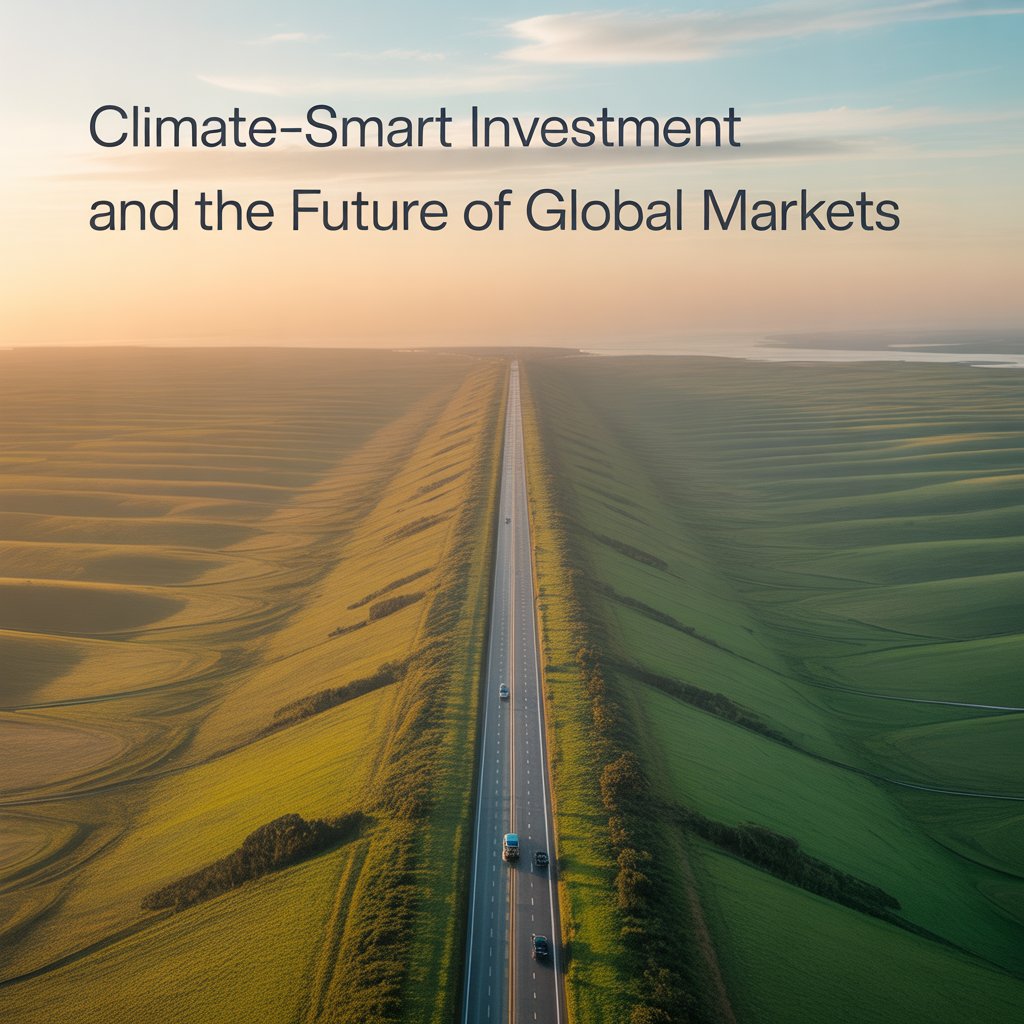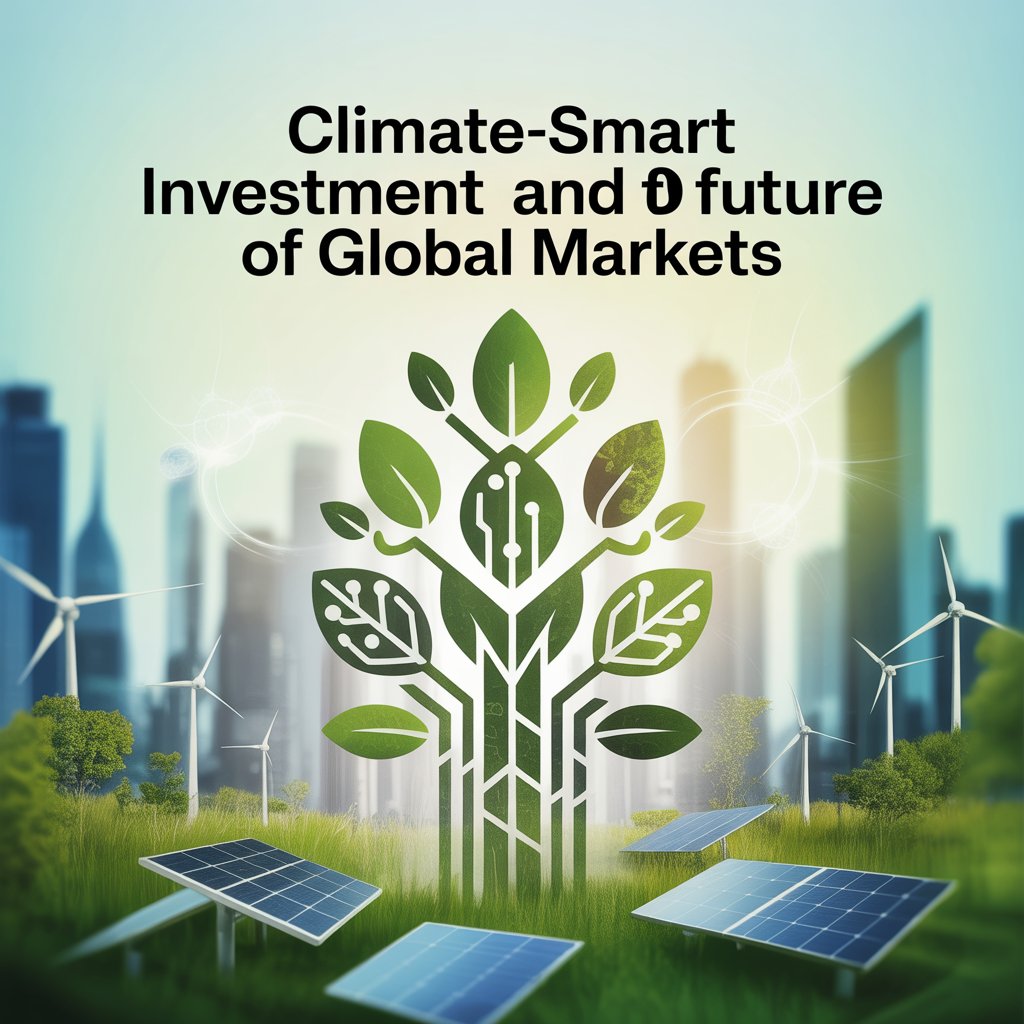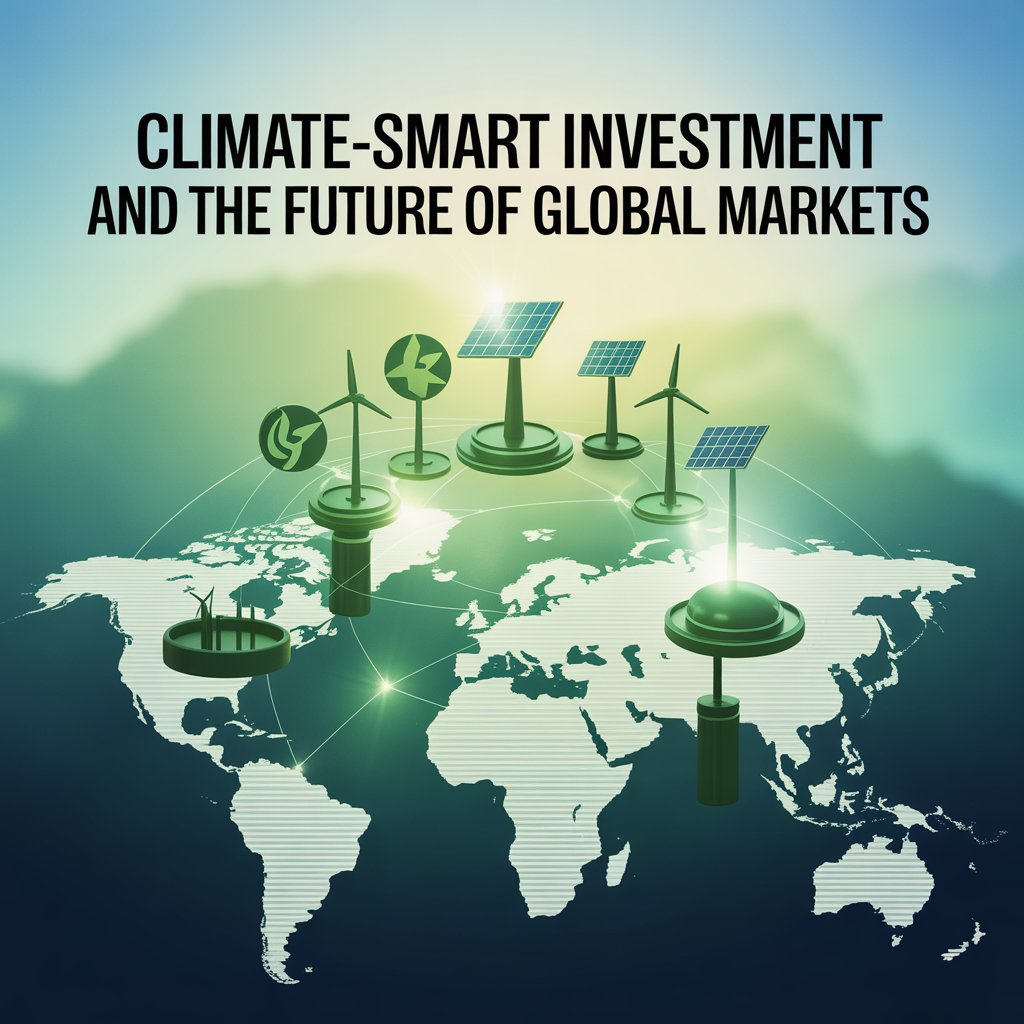Climate-Smart Investment and the Future of Global Markets explained: discover sustainable strategies, market trends, and growth opportunities worldwide.
Climate-smart investment is no longer a buzzword. It has become an urgent necessity for economies across the world. The growing impacts of climate change demand a financial system that values resilience and sustainability. In the United States and beyond, investors are recognizing that ignoring climate risks can be costlier than addressing them.
At its core, climate-smart investment means directing capital into projects that reduce climate risk while promoting long-term growth. This includes sustainable infrastructure planning, renewable energy, and green construction practices. For countries facing extreme weather, such as urban flooding in Pakistan, the need is even greater. Global markets now understand that resilience and profit must move hand in hand.
Climate Change and Its Global Economic Impacts
The economic impacts of climate change are visible everywhere. From rising insurance costs in Florida due to hurricanes to climate-induced GDP losses in Pakistan, the financial toll is staggering. The destruction of homes, transport, and energy systems forces governments and investors to rethink growth strategies.
In South Asia, repeated Rawalpindi floods, Islamabad drainage failures, and the Lai nullah overflow have disrupted lives and slowed economic activity. The same story unfolds in the U.S. with wildfires, droughts, and flooding. Global trade networks cannot thrive when entire regions are vulnerable to collapse, making climate-smart strategies essential for stability.
Climate-Smart Investment and the Future of Global Markets:Climate Risks for Financial Markets
Financial markets thrive on predictability. Climate change brings the opposite. Volatility grows when Karachi outdated drainage system collapses or flash floods in Khyber Pakhtunkhwa destroy farmland. These disasters do not stay local. Their economic shockwaves affect bonds, stocks, and commodities worldwide.

Investors now monitor Potohar plateau flood risks and glacial melt vulnerability with the same seriousness as interest rates. Without disaster risk reduction measures and proper flood risk mapping, markets lose confidence. A single extreme event can erode international investor confidence and shake entire economies.
Opportunities in Climate-Smart Sectors
While risks are high, so are opportunities. Clean energy, flood-resilient design, and nature-based climate solutions such as wetlands restoration are becoming profitable ventures. The U.S. renewable sector is attracting billions because investors see long-term value in resilience.
Even real estate is changing. Instead of unchecked expansion, focus is shifting to resilient housing societies with strong drainage and water management systems. When investors support no-build zones enforcement, they not only protect communities but also secure long-term returns. Climate-smart sectors are shaping the future of sustainable profit.
Climate-Smart Investment Strategies
Investors are adopting new strategies to address climate risks. Funds are now evaluated using Environmental, Social, and Governance (ESG) standards. Portfolios include green drainage corridors, solar power projects, and low-carbon infrastructure. This ensures that money flows into projects that deliver stability and resilience.
Another critical step is data. Advanced modeling tools use slope stability analysis and climate simulations to evaluate investment risks. Just as financial analysts examine earnings, they now assess housing societies drainage plans to ensure projects are safe. Climate-smart investment strategies focus on long-term survival, not just short-term gains.
Role of Education and Youth in Climate Investment
Young people are reshaping how capital is allocated. They demand climate adaptation strategies and refuse to support investments that harm the planet. Universities in the U.S. are teaching green construction practices and corporate social responsibility (CSR) as part of their curriculum.

This shift in education matters. Tomorrow’s investors are today’s students. They will drive the transition toward projects that prioritize public-private partnerships and sustainability. Their mindset is clear: growth without climate resilience is no growth at all.
Policy and Regulatory Frameworks
Government rules can either block or boost climate-smart investment. In the U.S., disclosure requirements and climate policies are pushing companies to consider environmental risks. Globally, frameworks like the Paris Agreement set the tone for sustainable finance.
Countries such as Pakistan are also recognizing this need. Establishing funds like the Pakistan Climate Change Fund can channel capital into projects that prevent deforestation and landslides and enhance resilience. Policies that require Environmental Impact Assessment (EIA) and strict no-build zones enforcement are vital for trust in global markets.

Case Studies and Real-World Examples
One strong example comes from Europe, where green bonds finance renewable energy and urban resilience projects. These case studies prove that climate-smart investment is not charity—it is smart business. Returns are steady because risks are managed.
Pakistan provides another case. Gilgit-Baltistan hotels on riverbanks collapse during floods, erasing millions in value. But when developers follow sustainable infrastructure planning and flood-resilient design, communities thrive, and investors gain. These lessons are universal: resilience pays.
| Case Study | Location | Lesson Learned |
|---|---|---|
| Rawalpindi floods | Pakistan | Ignoring drainage and water management systems increases losses |
| Green Bonds | Europe | Climate finance can deliver profit and resilience |
| U.S. Renewable Projects | United States | Long-term stable returns from clean energy |
Challenges and Barriers in Climate-Smart Investment
Despite the opportunities, barriers remain. Many businesses still focus on short-term profits, ignoring climate risks. Corruption, weak enforcement of laws, and resistance to no-build zones enforcement hinder progress.
Public awareness is also low. Communities invest in risky housing near rivers, unaware of the danger. Without campaigns to explain the economic cost of climate disasters, investors and citizens will continue making unsafe choices. Overcoming these barriers requires strong leadership and accountability.

Future Outlook and Recommendations: Climate-Smart Investment and the Future of Global Markets
The future of global markets depends on climate-smart investment. The choice is between continuing with fragile infrastructure or embracing climate adaptation strategies that ensure growth. In the U.S., resilience is already shaping capital flows.
For Pakistan and other vulnerable countries, strict flood risk mapping, strong public-private partnerships, and enforcement of EIA are critical. The dividends of resilience are clear: stronger economies, safer communities, and restored international investor confidence. Climate-smart investment is not an option. It is the only path forward.

